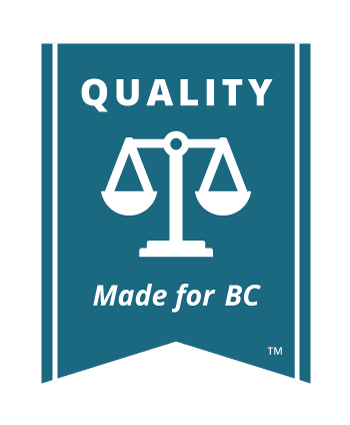Reply to a Claim


I’ve been served with a Notice of Claim. What if I want to pay what has been claimed?
If you want to pay the entire claim, you can simply do so and ask the claimant to withdraw the claim and file a Notice of Withdrawal form. You can ask for a copy of the filed Notice in exchange. It is a good idea to get a receipt or some kind of written acknowledgement from the claimant that the claim has been paid in full.
One convenient place to meet and have this exchange is at the small claims court registry. That way, at the same time, you can make the payment (in bank draft, certified cheque, cash with receipt) while the claimant files the Notice of Withdrawal.
If you only think you should pay part of the claim, you still must file a Reply where you outline what you are admitting to, and what you are not agreeing to pay and why. If you agree to the claim but need time to pay you can also use the Reply to suggest a payment plan.
Parties can come to an agreement outside of court at any point. Parties can file a consent order or a payment order and file it with the registry. The agreement can then be enforced like a judge’s order.
What to do if You’ve Received a Notice of Claim
If you have received a BC Small Claims Court Notice of Claim, and you are named as the defendant, you are being sued. You only have a short time to file your reply with the court. Be sure to review the whole document carefully as soon as you get it. The Notice of Claim form includes a blank Reply form with instructions to help you fill it out. Do not ignore a Notice of Claim! If you do nothing, the claimant can get a default judgment against you. See Default Orders to learn more.

Read the Rules
STEP 1: Deciding How to Reply to a Claim?
The first thing you need to decide is whether or not you want to oppose all or part of the claim. You may also decide to make a counterclaim against the claimant (see Counterclaim). Or, if you do not oppose the claim, you should make arrangements with the claimant to make payment and ask them to withdraw the claim (see Options).
Agree to Pay
If you agree to pay part or all of the claim, you can reach out to the claimant to discuss payment. If you are able to come to an agreement over the payment amount and schedule you can sign and file a consent order. If you come to an agreement make sure to request the other party withdraw their claim. They can do this by filing a Notice of Withdrawal.
If you are unable to reach the claimant, can’t come to an agreement or only agree to pay part of the claim you will want to file out the Notice of Claim Reply form. There is space on the Reply form for you to indicate what you are agreeing to pay.

Find the Forms
Oppose the Claim
If you do not agree with all or part of the claim you will need to state your reasons why in the Reply form.

Learn More
Reply to a Claim from the Government of BC
Counterclaim
If you think that you also have a claim against the claimant you may decide to sue them. This is called a counterclaim. You can counterclaim up to $35,000 in BC Small Claims Court – if it is more, the whole matter will be moved to the BC Supreme Court.
For example: If your contractor is suing you for an unpaid invoice, but you believe that their faulty work caused damage to your home, you could counterclaim for the damages they caused.
There is a section on the Reply form to make a counterclaim. Fill it out according to the instructions and file it the same time as you file the Reply form. Provide information to describe your claim against the claimant. What is your claim? Why? How much?
If you are submitting a counterclaim, you need to provide the claimant with a copy. See Serving Documents to learn more. After you serve the counterclaim, the claimant will need to provide you with a reply. The claim and counterclaim will be handled by the court at the same time.

Read the Rules
Third Party Claims- What if I think someone else should pay?
If you think there is someone other than you who should pay all or a portion of the claim, you can make a third party claim.
For example, you would make a third party claim if you are being sued for doing a roof that leaks but you think the leak is because the shingles were faulty. You can claim against the shingles manufacturer.
To make a third party claim in BC Small Claims Court, you must:
- Complete a Third Party Notice form
- File it at the court registry and pay the filing fee
- Serve the third party with these documents:
- A copy of the Third Party Notice
- A copy of the Notice of Claim
- A copy of your Reply form
- A blank Reply to Third Party Notice (Form 3.1)
- A copy of the notice of settlement conference, mediation session, trial conference or trial, if one has been issued

Read the Rules

Find the Form

Learn More
Third Party Procedure from the Law Centre
Step 2: Complete the Reply to a Claim Form
To:
Put in the name and address of the claimant as it appears in the Notice of Claim.
From:
Put in your full name and address. Be sure this address is your current address where you can receive court documents and notices.
If your address changes at any time, be sure to notify the Small Claims Court registry and all other parties to the lawsuit by completing an Address for Service form.
Dispute:
Take a look at the “How Much” section of the Notice of Claim. For each section (a –e) state the reasons why you disagree. If you agree with part of the claim indicate that here.
Agreement with the claim:
If you agree to pay part or all of the claim, this is where you state the amount and timing of payment or payments.

DIY Tools
Step 3: File your Reply and Pay the Court Fee
The Reply form must be filed at the same registry where the Notice of Claim was filed. Check the registry location on the top of the Notice of Claim form.
You will be asked by the court registry to pay a filing fee. The filing fees would also need to be paid if filing electronically, by mail or fax. You may pay the filing fee by cash, debit, personal or company cheque, certified cheque, money order or bank draft, payable to the Minister of Finance. For more information on these fees see Forms, Filing & Fees.
The registry will serve the Reply form on the claimant within 21 days of it being filed.
Next Steps?
What happens next may depend on the court location of the Claim. See the Court Process Overview to find out about the next steps in your case. If you have agreed to pay the full amount of the claim you and the claimant may sign a consent order and agree upon a payment schedule.

Learn More
Replying to a Claim Guide from the Government of BC
What To Do If You Are Sued In Small Claims Court from The Law Centre

DIY Tools
I need more time to respond to a claim. How can I get an extension?
You can make an application to a Judge.
A judge may make an order without hearing or notice to the other party for certain orders including extending or shortening a time limit. However, a judge may require a hearing for this kind of an application and if that happens the judge will direct you as to whether you need to serve the other party and how you are to attend (in person, video etc…).









